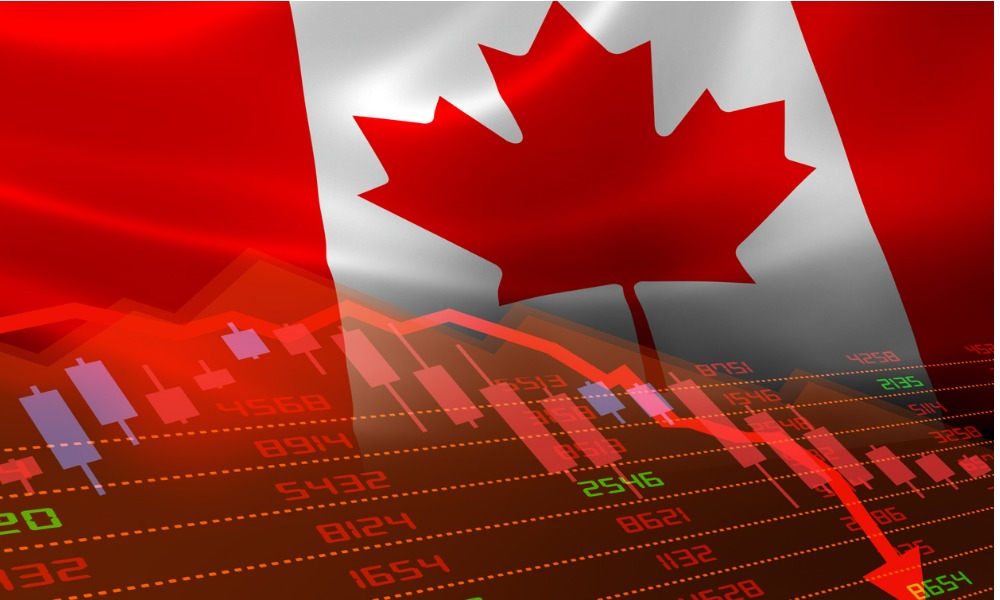Metal exposure drives TSX gains as gold prices jump 30% year-to-date

A 30 percent rally in gold prices has pushed Canadian equities ahead of their US counterparts, with gold and precious metals now responsible for a substantial share of the S&P/TSX composite index’s performance.
According to The Canadian Press, gold’s influence has become increasingly pronounced in Canada’s market structure.
“In Canada, gold has been the huge mover,” said John Zechner, chair and founder of J. Zechner Associates.
He noted that gold now makes up 12 percent of the index and called it “the huge winner.”
Zechner added that this is “the single most important reason why Canada has played such catch-up and has actually done better than the S&P 500, certainly this year so far.”
As of Wednesday afternoon, the TSX was up about 11 percent year-to-date, compared to an 8 percent gain for the S&P 500, according to LSEG Data & Analytics.
The Canadian Press reported that the August gold contract hovered around US$3,400 per ounce.
The sector’s outperformance has not gone unnoticed.
Dennis da Silva, senior portfolio manager at Middlefield, said the S&P/TSX global gold index is “up 40 per cent year-to-date.”
He added that around “30 per cent of the index’s return is driven by gold and silver names or precious metals in general.”
He described gold as “the largest contributor” to TSX growth.
Da Silva also attributed gold’s rise to increased demand for safe haven assets, particularly during periods of volatility earlier this year, when US President Donald Trump introduced and then delayed a series of global tariffs.
These moves created uncertainty around trade policy and its effects on corporate profits.
“That caused countries to re-evaluate how they hold foreign reserves,” he said, pointing to a shift in central bank behaviour following the US and European Union’s freezing of Russian assets after its invasion of Ukraine.
Da Silva said it was a wake-up call for countries to realise that their assets are not necessarily safe and could be frozen.
“That caused countries to re-evaluate how they hold foreign reserves,” he said. “I think at that point that’s when we started to see pretty active buying.”
Chris McHaney, head of investment management and strategy at Global X Investments Canada, acknowledged the performance gap. “It really is more of a story of gold has been on fire and in Canada, we just have more exposure to that.”
While gold’s upward momentum may be slowing, da Silva said the sector is still fundamentally strong. “I don’t think it’s too late,” he said.
He added that history shows strong sectors focus on costs and profitability per share, making it “an industry that can make good money over time.”
McHaney echoed that view, noting that investors may still benefit from holding gold equities. “We think gold itself might not keep rising in value, but it just has to stay kind of where it is now for the gold equities to continue to do very strongly.”
The Canadian Press said that the divergence between Canadian and US equity performance has also been shaped by differing sector drivers.
While the TSX has leaned heavily on materials, US markets have been led by large-cap tech names.
McHaney said these firms helped fuel the “US exceptionalism story,” though that momentum is showing signs of fading.
The so-called magnificent seven group of US tech stocks — which includes Alphabet, Amazon, Meta Platforms, Microsoft, Nvidia, and Tesla — has posted uneven results.
Tesla shares are down nearly 20 percent year-to-date, Alphabet shares remain flat, while Nvidia and Microsoft have gained roughly 27 percent and 20 percent, respectively.
McHaney said it remains unclear whether the TSX will continue outperforming the S&P 500, but suggested it is not too late for investors to consider gold exposure.
“There could be a psychological element of maybe ‘I missed that performance, I’ll just stay where I am,’” he said.
He added that while it’s difficult to isolate what drives gold prices at any given time, macro factors such as government deficits, inflation concerns and trade uncertainty tend to support the commodity.



